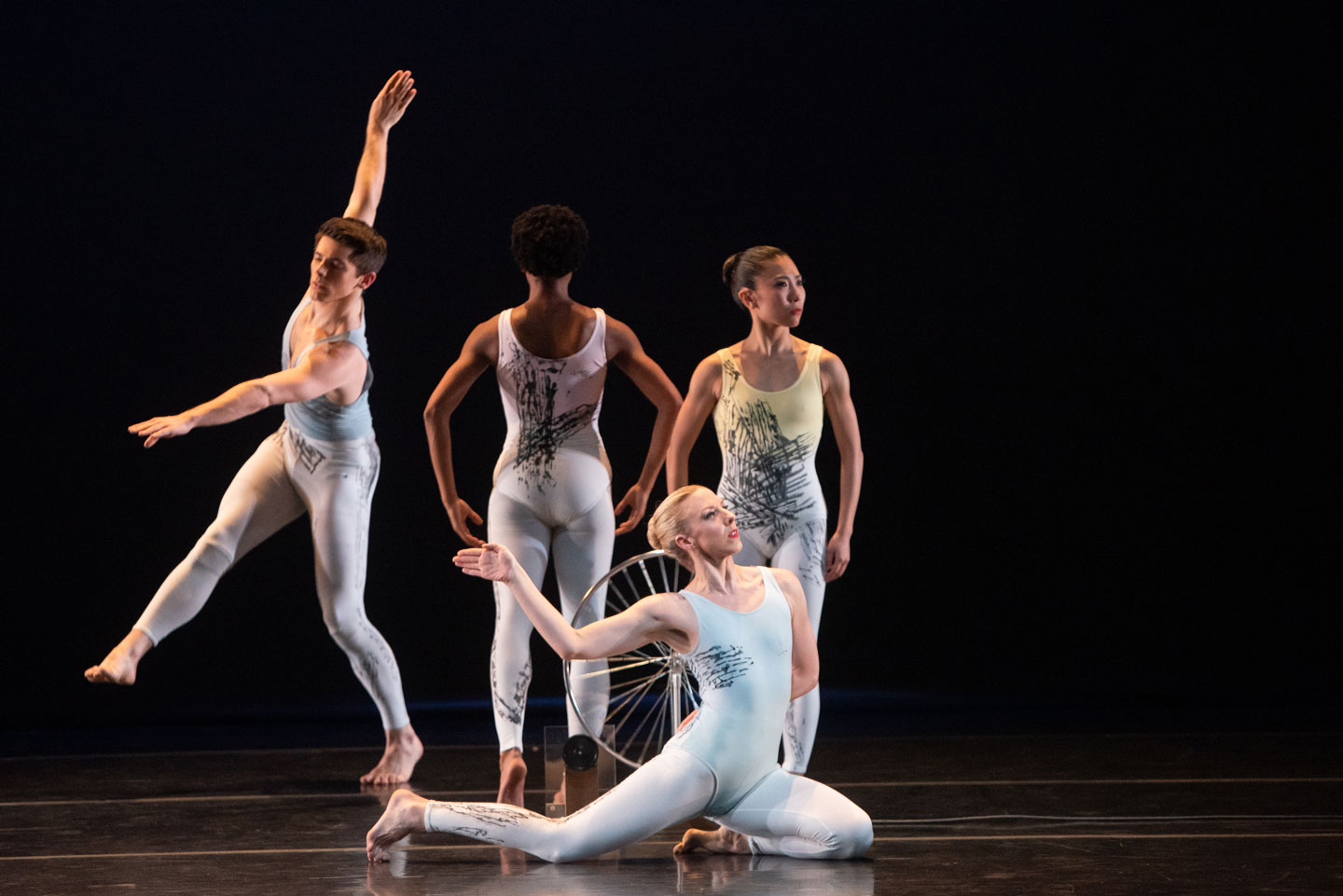 By Heather Mayer Irvine
By Heather Mayer Irvine
An influential piece of art almost died with its last performance more than 50 years ago. But thanks to a collaborative effort, the groundbreaking work from dancer Paul Taylor and artist Robert Rauschenberg will continue its influence.
In an effort to stop the dance, Tracer, from being lost to time, Kim Jones, professor associate of dance at University of North Carolina at Charlotte (UNC Charlotte), worked with Paul Taylor American Modern Dance to reconstruct it.
They invited Robert S. Mattison, Marshall R. Metzgar Professor of Art History, who has studied Rauschenberg extensively, into the project. His job was to provide history on the collaborations by Taylor and Rauschenberg, specifically on rarely viewed works from the 1950s and 1960s.
 “This is an important piece of dance history that’s reappearing,” says Mattison, who gave commentary before the recent performance at Lafayette College.
“This is an important piece of dance history that’s reappearing,” says Mattison, who gave commentary before the recent performance at Lafayette College.
“Taylor and Rauschenberg met in the 1950s and began collaborating on a new style of dance, one that combined everyday movements and everyday materials. Taylor was experimenting with movements he observed on the streets of New York City, while Rauschenberg incorporated common items he found on the street into his art,” he explains.
Together the duo created 12 pieces; Taylor and his early company danced, and Rauschenberg designed the majority of stage sets, costumes, and lighting.
But after the last performance of Tracer in 1964, the pair parted ways, and the dance that the two had created was nearly forgotten.
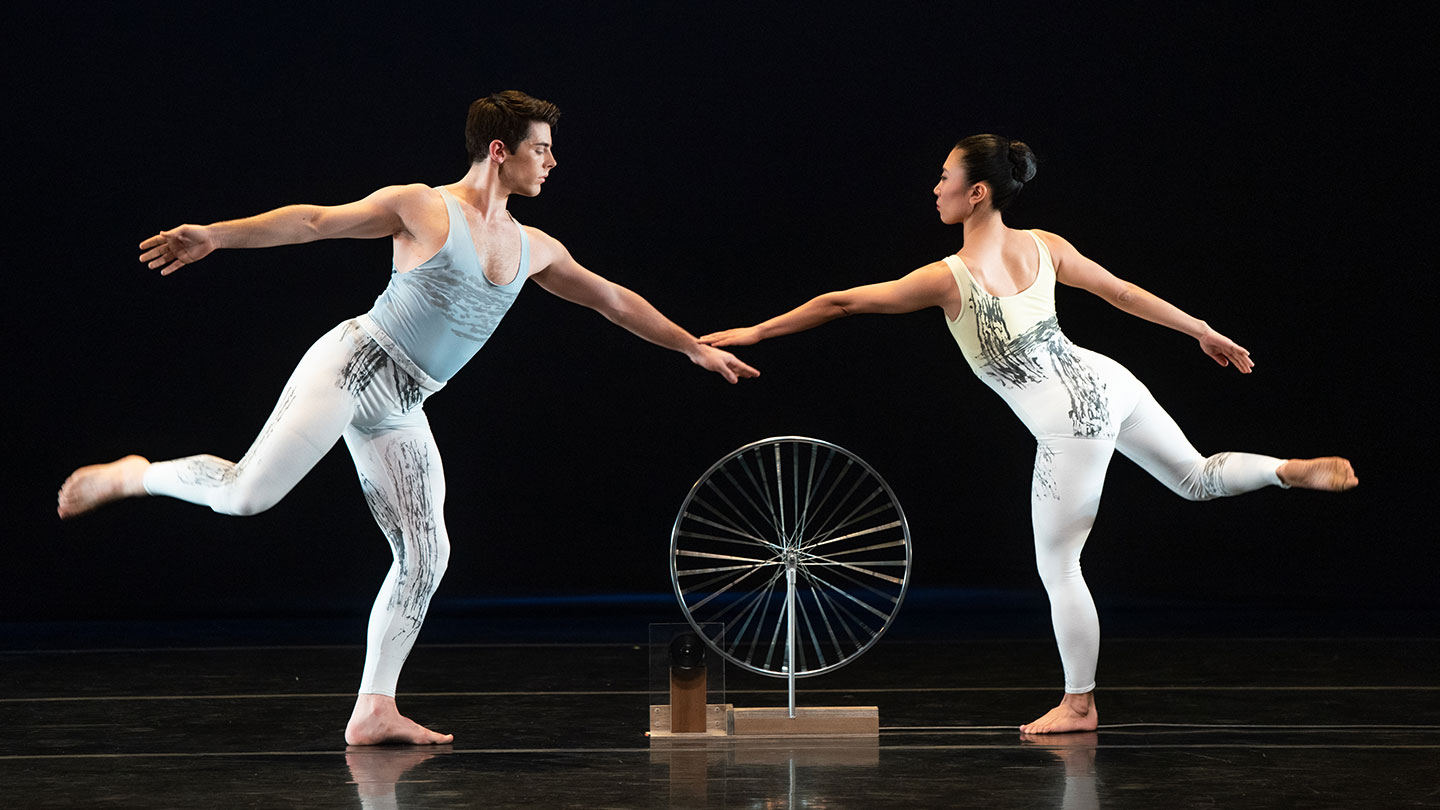 “There were no videos,” says Mattison. “Taylor didn’t do the traditional dance notation. His notebooks were filled with wonderful stick figures. Really, he held everything in his head.”
“There were no videos,” says Mattison. “Taylor didn’t do the traditional dance notation. His notebooks were filled with wonderful stick figures. Really, he held everything in his head.”
The original team led by Jones spoke to Paul Taylor about the dance. The team members talked to Bettie de Jong, one of the original dancers, and studied Taylor’s notebooks. They even found the tapes—reel to reel—of original music by James Tenney and original Rauschenberg costumes put away in a shoebox in Taylor’s closet.
Rauschenberg’s sculpture Tracer, a motorized bicycle wheel that turns off and on throughout the performance, had been sold from Taylor’s private collection to fund The Paul Taylor Dance Foundation. The Rauschenberg sculpture was recreated in facsimile by artist Jeff Crawford for the performance.
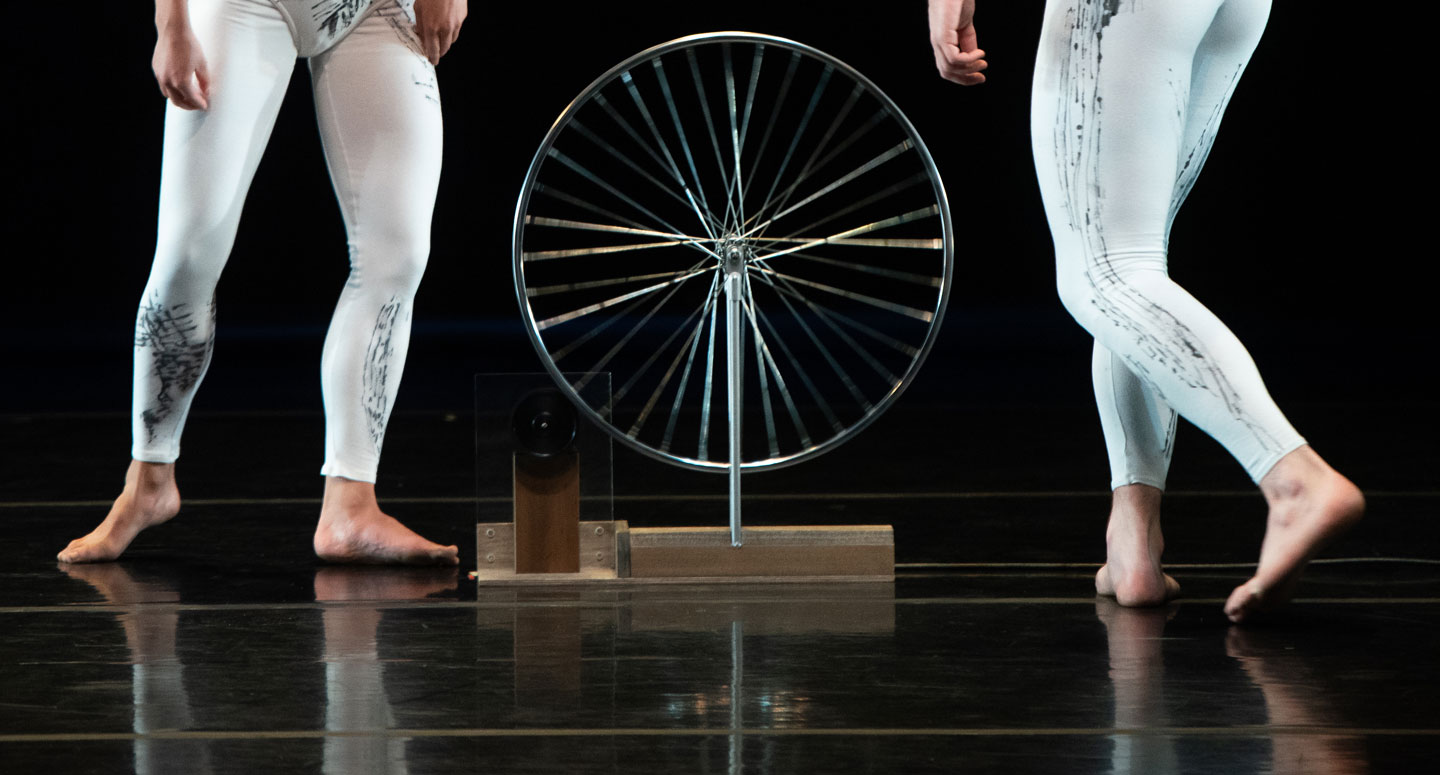 “To me, it seems as if it is another performer on stage,” says Mattison of the Tracer sculpture.
“To me, it seems as if it is another performer on stage,” says Mattison of the Tracer sculpture.
The reconstructed dances were first performed at UNC Charlotte in 2016 after Taylor himself, who passed away six months ago, gave his stamp of approval.
Mattison is excited to have been able to bring the performance to Lafayette, where he hopes students, regardless of whether they enjoy dance, learn about the importance of breaking the mold.
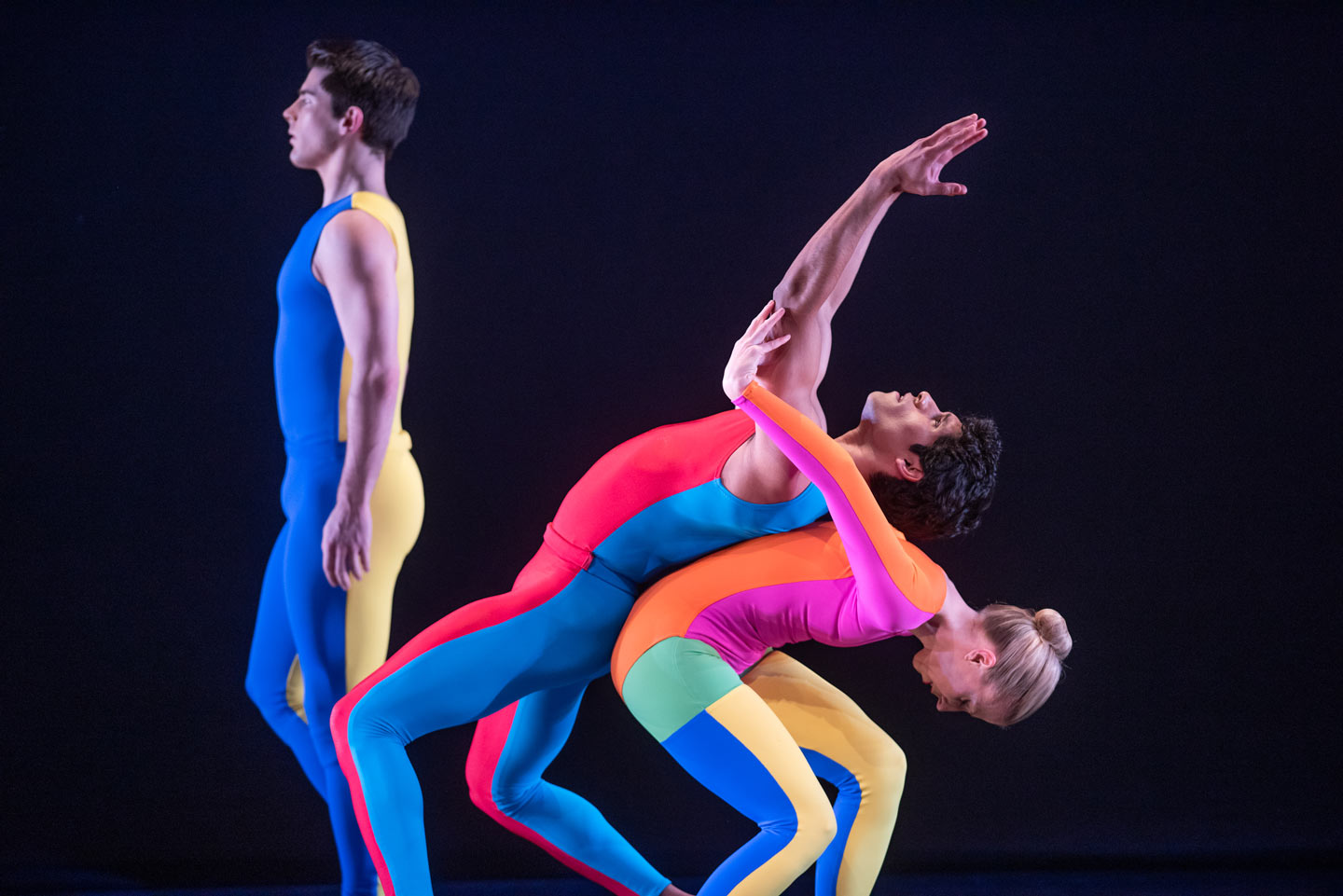 “I hope they learn to love modern dance and art, but if they never go to a museum or a dance performance again, I hope the collaborations from Taylor and Rauschenberg will inspire them to take more risks, take chances, do something unusual, challenge the norms,” says Mattison, who praises the College’s effort to excite its students with its curriculum.
“I hope they learn to love modern dance and art, but if they never go to a museum or a dance performance again, I hope the collaborations from Taylor and Rauschenberg will inspire them to take more risks, take chances, do something unusual, challenge the norms,” says Mattison, who praises the College’s effort to excite its students with its curriculum.
But there’s also a personal sense of pride for Mattison.
“I’ve been teaching here for 37 years,” he says. “I’m excited to bring a project with which I was involved home.”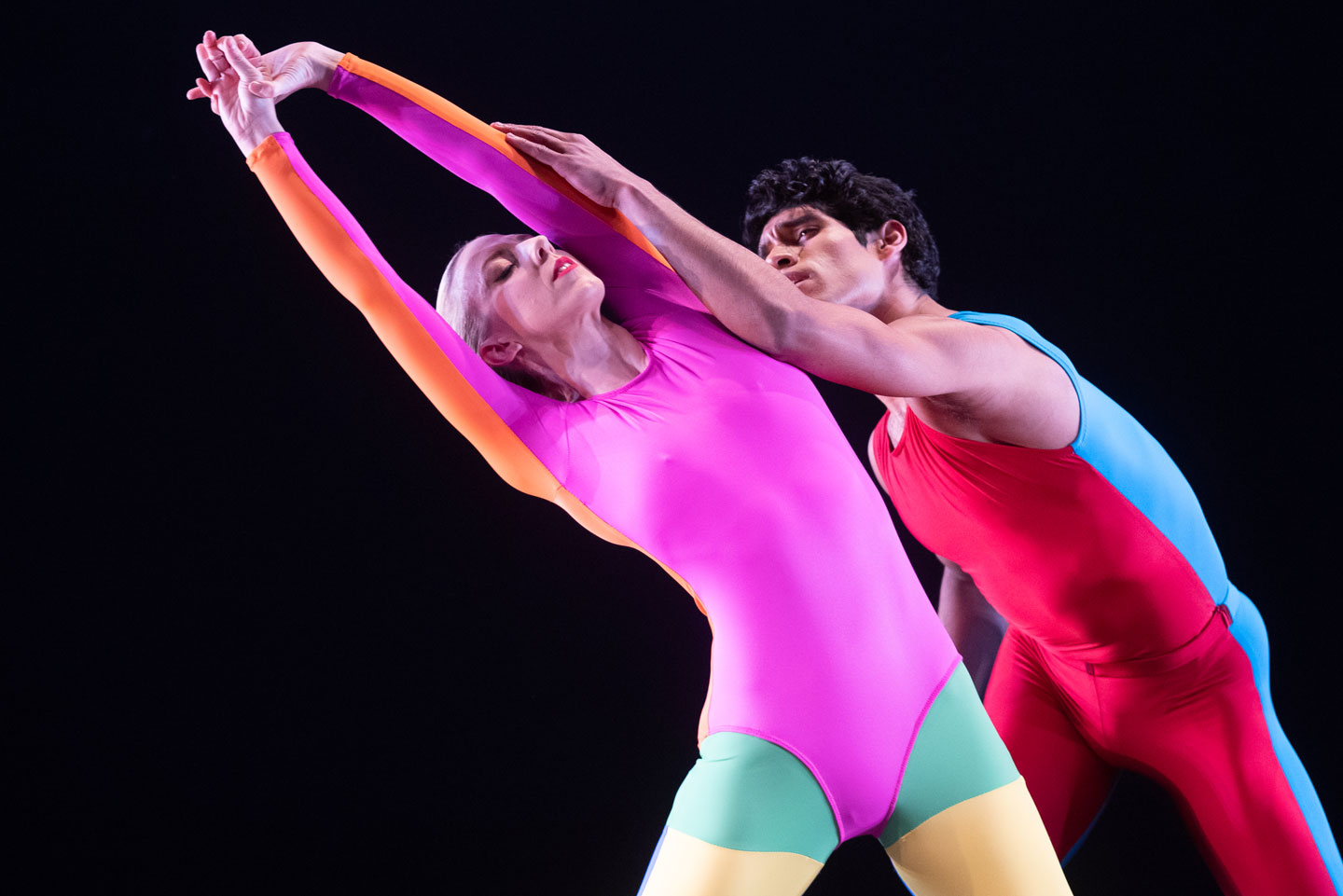
 By Heather Mayer Irvine
By Heather Mayer Irvine “This is an important piece of dance history that’s reappearing,” says Mattison, who gave commentary before the recent performance at Lafayette College.
“This is an important piece of dance history that’s reappearing,” says Mattison, who gave commentary before the recent performance at Lafayette College. “There were no videos,” says Mattison. “Taylor didn’t do the traditional dance notation. His notebooks were filled with wonderful stick figures. Really, he held everything in his head.”
“There were no videos,” says Mattison. “Taylor didn’t do the traditional dance notation. His notebooks were filled with wonderful stick figures. Really, he held everything in his head.” “To me, it seems as if it is another performer on stage,” says Mattison of the
“To me, it seems as if it is another performer on stage,” says Mattison of the  “I hope they learn to love modern dance and art, but if they never go to a museum or a dance performance again, I hope the collaborations from Taylor and Rauschenberg will inspire them to take more risks, take chances, do something unusual, challenge the norms,” says Mattison, who praises the College’s effort to excite its students with its curriculum.
“I hope they learn to love modern dance and art, but if they never go to a museum or a dance performance again, I hope the collaborations from Taylor and Rauschenberg will inspire them to take more risks, take chances, do something unusual, challenge the norms,” says Mattison, who praises the College’s effort to excite its students with its curriculum. 
1 Comment
Great work to be seen again….Ed Kerns
Comments are closed.